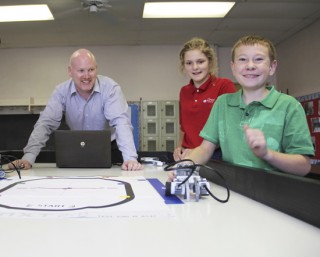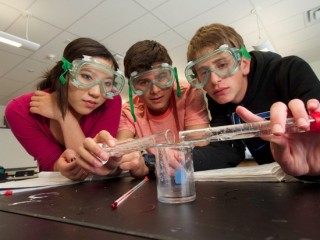While prosthetics technology has become highly developed in the past 10 years, the average cost for a prosthetic limb is anywhere from $5,000 – $50,000, and can be unaffordable to many people. Seventh graders at St. John’s Episcopal School, which uses a project-based, STEAM approach to learning to address real world problems in inventive ways, hope to find a low-cost solution for them.
To culminate their study on living organisms, specifically focusing on their bodies and cells, DNA, and human anatomy, students must participate in a strategic design process to build a prosthetic hand using inexpensive, readily available materials—including rubber bands, pvc pipe, cardboard tubes, hair claws, lanyards, and popsicle sticks—in hopes of providing less-resourced communities the same ability.
Applying knowledge and skills across multiple topics such as bioengineering, musculoskeletal system, 3D animation, and math sign language, students work in groups of four to brainstorm, design, build, and test their ideas. Functionality, durability, and ease of use are required criteria. They must test their prototype against different parameters to ensure their design will work properly and efficiently. “This is the most meaningful stage,” says their teacher, Vedha Muthu, “because they learn the importance of failure and how these moments can be stepping stones to great inventions.”
Seventh grader Sydney McMahon agrees that the several trials she and her classmates conducted this year resulted in a great final product. “I also learned you don’t need professional or expensive things to build something cool.” For Jake Miller, the project made him realize “how tough it is for people who have prosthetics, and how much work engineers go through to create them.”








